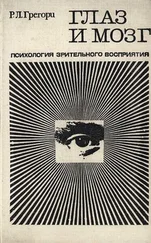Court, J. H. (1977). Pornography and sex crimes: A re-evaluation in the light of recent trends around the world. International Journal of Criminology and Penology, 5, 129–157.
Court, J. H. (1982). Rape trends in New South Wales: A discussion of conflicting evidence. Australian Journal of Social issues, 17, 202–206.
Court, J. H. (1984). Sex and violence: A ripple effect. In: N. M. Malamuth E. Donnerstein (Eds.). Pornography and sexual aggression (p. 143–172). Orlando, FL: Academic Press.
Creedon, R J. (Ed.). (1994). Women, media, and sport: Challenging gender values. Thousand Oaks, CA: Sage.
Crimmins. C. (1991. January). Sexism in cartoonland. Working Mother. 37–41.
Croteau. D., Hoynes, W. (1992). Men and the news media: The male presence and its effect. In: S. Craig (Ed.). Men, masculinity, and the media (p. 154–168). Newbury Park. CA: Sage.
Cumberbatch, G., Howitt, D. (1989). A measure of uncertainty: The effects of the mass media. London: John Libbey.
Cumberbatch, G.. Negrine, R. (1991). Images of disability on television. London: Routledge. Cumings, B. (1992). War and television. New York: Verso.
Cuperfain, R., Clarke. T. K. (1985). A new perspective on subliminal perception. Journal of Advertising, J4(\), 36–41.
Dagnoli, J. (1990, April). Sokolof keeps thumping away at food giants. Advertising Age, 3, 63.
Dall, P. W. (1988). Prime time television portrayals of older adults in the context of family life. The Gerontologist, 28, 700–706.
Dan Quayle vs. Murphy Brown. (1992, June 1). Time, 50.
Davidson, R. (1997, August 31). The last stereotype. Scotland on Sunday. Reprinted in: World Press Review, December 1997. p. 26.
Davies, M. M. (1997). Fake, fact, and fantasy: Children's interpretations of television reality. Mahwah, NJ: Lawrence Eribaum Associates.
Davis, D. K., Baran, S. J. (1981). Mass communication and everyday life: A perspective on theory and effects. Belmont. CA: Wadsworth.
Davis, M. H., Hull. J. G., Young. R. D., Warren, G. G. (1987). Emotional reactions to dramatic film stimuli: The influence of cognitive and emotional empathy. Journal of Personality and Social Psychology, 52, 126–133.
Davis, R. H. (1983). Television health messages: What are they telling us? Generations, 3(5), 43–45.
Davis, R. H., Davis, J. A. (1985). TV's image of the elderly. Lexington, MA: Lexington Books/D. C. Heath.
Davison, W. P. (1983). The third-person effect in communication. Public Opinion Quarterly, 47, 1–15.
Day, D. M., Page, S. (1986). Portrayal of mental illness in Canadian newspapers. Canadian Journal of Psychiatry. 31, 813–816.
Day, G., Bloom, C. (Eds.). (1988). Perspectives on pornography: Sexuality in film and literature. London: Macmillan.
Demers, D. Р ., Craff, D., Choi. Y.-H., Pessin, В . М . (1989). Issue obtrusiveness and the agenda-setting effects of national network news. Communication Research, 16, 793–812.
Dermer, M., Pyszczynski. T. A. (1978). Effects of erotica upon men's loving and liking responses. Journal of Personality and Social Psychology, 36, 1302–1309. Dershowitz, A. (1985, May 25). These cops are all guilty. TV Guide, 4–7.
Desmond, R. J., Singer, J. L., Singer, D. G. (1990). Family mediation: Parental communication patterns and the influences of television on children. In: J. Bryant (Ed.). Television and the American family (p. 293–309). Hillsdale, NJ: Lawrence Eribaum Associates.
Dettwyler, K. A. (1995). Beauty and the breast: The cultural context of breast-feeding in the United Slates. In: P. Stuart-Macadam K. A. Dettwyler (Eds.). Breast-feeding: Biocultural perspectives, (p. 167–215). Hawthorne, NY: deGruyter.
Devlin, L. P. (1987). Campaign commercials. In: A. A. Berger (Ed.). Television in society (p. 17–28). New Brunswick, NJ: Transaction Books.
Devlin, L. R (1997). Contrasts in Presidential campaign commercials of 1996. American Behavioral Scientist, 40, 1058–1084.
Diamond, D. (1987, June 13). Is the toy business taking over kids' TV? TV Guide, 4–8.
Diamond, E., Noglows, P. (1987, June 20). When network news pulls its punches. TV Guide, 2–9.
Diaz-Guerrero, R., Reyes-Lagunes, I., Witzke, D. В ., Holtzman, W. H. (1976). Plaza Sesamo in Mexico: An evaluation. Journal of Communication, 26, 109–123.
Dietz, P. E., Evans, B. (1982). Pornographic imagery and prevalence of paraphilia. American Journal of Psychiatry, 139, 1493–1495.
Dietz, P. E., Harry, В ., Hazelwood, R. R. (1986). Detective magazines: Pornography for the sexual sadist? Journal of Forensic Sciences, 3/(I), 197–211.
DiFranza, J. R., Richards, J. W, Jr., Paulman, P. M., Wolf-Gillespie, N., Fletcher, C., Jaffe, R. D., Murray, D. (1991). RJR Nabisco's cartoon camel promotes Camel cigarettes to children. Journal of the American Medical Association. 266, 3149–3152.
DiFranza, J. R., Туе . J. B. (1990). Who profits from tobacco sales to children? Journal of the American Medical Association JAMA, 263, 2784–2787.
Dobrow, J. R. (1990). Patterns of viewing and VCR use: Implications for cultivation analysis. In: N. Signorietli
M. Morgan (Eds.). Cultivation analysis: New directions in media effects research (p. 71–84). Newbury Park, CA: Sage.
Dobrow, J. R., Gidney, C. L. (1998). The good, the bad, and the foreign: The use of dialect in children's animated television. The Annals of the American Academy of Political and Social Science, 557, 105–119.
Donnerstein, E. (1980). Aggressive erotica and violence against women. Journal of Personality and Social Psychology, 39, 269–277.
Donnerstein, E., Berkowitz, L. (1981). Victim reactions in aggressive erotic films as a factor in violence against women. Journal of Personality and Social Psychology, 41, 710–724.
Donnerstein, E., Donnerstein, M., Evans, R. (1975). Erotic stimuli and aggression: Facilitation or inhibition? Journal of Personality and Social Psychology, 32, 237–244.
Donnerstein, E., Hallam, J. (1978). Facilitating effects of erotica on aggression against women. Journal of Personality and Social Psychology, 36, 1270–1277.
Donnerstein, E., Linz, D., Pcnrod, S. (1987). The question of pornography: Research Findings and policy implications. New York: Free Press.
Donnerstein, E., Smith, S. L. (1997). Impact of media violence on children, adolescents, and adults. ln:S. Kirschner D. A. Kirschner (Eds.). Perspectives on psychology and the media (p. 29–68). Washington, DC: American Psychological Association.
Donohew, L., Helm, D., Haas, J. (1989). Drugs and (Len) Bias on the sports page. In: L. A. Wenner (Ed.). Media, sports, and society (p. 225–237). Newbury Park, CA: Sage.
Doob, A. N., Macdonald, G. E. (1979). Television viewing and fear of victimization: Is the relationship causal? Journal of Personality and Social Psychology, 37, 170–179.
Dorr, A. (1980). When I was a child I thought as a child. In: S. B. Withey R. P. Abeles (Eds.). Television and social behavior (p. 191–229). Hillsdale, NJ: Lawrence Eribaum Associates.
Dorr, A. (1982). Television and the socialization of the minority child. In: G. L. Berry C. Mitchell-Kernan (Eds.). Television and the socialization of the minority child. New York: Academic Press.
Dorr, A., Graves, S. В ., Phelps, E. (1980). Television literacy for young children. Journal of Communication, 30, 71–83.
Dorr, A., Kovaric, P (1980). Some of the people some of the timebut which people? Televised violence and its effects. In: E. Palmer A. Dorr (Eds.). Children and the faces of television (p. 183–199). New York: Academic Press.
Dorr, A., Kunkel, D. (1990). Children and the media environment: Change and constancy amid change. Communication Research, 17, 5–25.
Dorris, M. (1988, May 28). Why Mister Ed still talks good horse sense. TV Guide, 34–36.
Читать дальше












